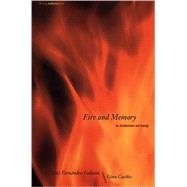
| Preface | xii | ||||
| one Architecture Discovers Fire | 2 | (32) | |||
|
|||||
|
3 | (2) | |||
|
|||||
|
5 | (2) | |||
|
|||||
|
7 | (2) | |||
|
|||||
|
9 | (6) | |||
|
|||||
|
15 | (2) | |||
|
|||||
|
17 | (17) | |||
|
|||||
|
22 | (2) | |||
|
|||||
|
24 | (10) | |||
| two The Heating of the World, from Newton to Carnot | 34 | (28) | |||
|
|||||
|
35 | (3) | |||
|
|||||
|
38 | (1) | |||
|
|||||
|
39 | (8) | |||
|
|||||
|
47 | (2) | |||
|
|||||
|
49 | (6) | |||
|
|||||
|
55 | (2) | |||
|
|||||
|
57 | (5) | |||
|
|||||
| three Architecture, Memory, and Entropy: Amnesia or History | 62 | (38) | |||
|
|||||
|
63 | (4) | |||
|
|||||
|
67 | (3) | |||
|
70 | (2) | |||
|
|||||
|
72 | (4) | |||
|
76 | (3) | |||
|
|||||
|
79 | (8) | |||
|
|||||
|
87 | (5) | |||
|
|||||
|
92 | (2) | |||
|
94 | (6) | |||
|
|||||
| four Paradigms of Life and Thermodynamic Architectures | 100 | (28) | |||
|
|||||
|
101 | (1) | |||
|
|||||
|
102 | (2) | |||
|
|||||
|
104 | (8) | |||
|
|||||
|
112 | (2) | |||
|
|||||
|
114 | (5) | |||
|
119 | (5) | |||
|
|||||
|
124 | (4) | |||
| five Organisms and Mechanisms, Metaphors of Architecture | 128 | (52) | |||
|
|||||
|
129 | (2) | |||
|
131 | (8) | |||
|
|||||
|
139 | (2) | |||
|
|||||
|
141 | (4) | |||
|
|||||
|
145 | (7) | |||
|
|||||
|
152 | (6) | |||
|
|||||
|
158 | (6) | |||
|
|||||
|
164 | (9) | |||
|
|||||
|
173 | (7) | |||
|
|||||
| six Energy as the Currency of Nature: A Genealogy | 180 | (32) | |||
|
|||||
|
181 | (1) | |||
|
182 | (1) | |||
|
|||||
|
183 | (4) | |||
|
|||||
|
187 | (4) | |||
|
191 | (3) | |||
|
194 | (3) | |||
|
|||||
|
197 | (5) | |||
|
202 | (5) | |||
|
207 | (5) | |||
|
|||||
| seven Thermal Space in Architecture | 212 | (50) | |||
|
|||||
|
213 | (1) | |||
|
|||||
|
214 | (6) | |||
|
|||||
|
220 | (6) | |||
|
|||||
|
226 | (7) | |||
|
|||||
|
233 | (8) | |||
|
|||||
|
241 | (10) | |||
|
|||||
|
251 | (6) | |||
|
|||||
|
257 | (5) | |||
|
|||||
| Notes | 262 | (44) | |||
| Bibliography | 306 | (8) | |||
| Index of names | 314 |
The New copy of this book will include any supplemental materials advertised. Please check the title of the book to determine if it should include any access cards, study guides, lab manuals, CDs, etc.
The Used, Rental and eBook copies of this book are not guaranteed to include any supplemental materials. Typically, only the book itself is included. This is true even if the title states it includes any access cards, study guides, lab manuals, CDs, etc.